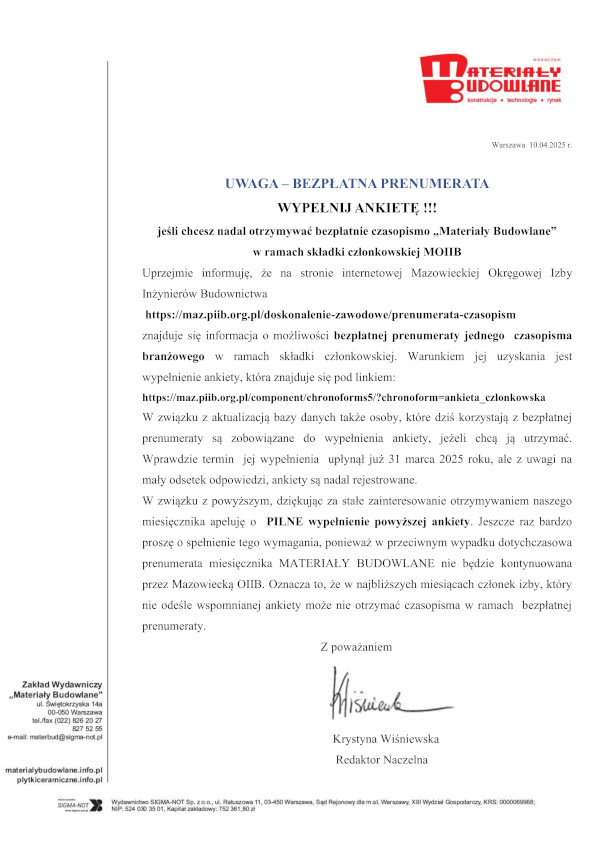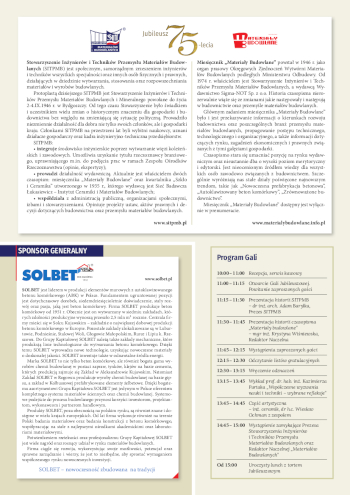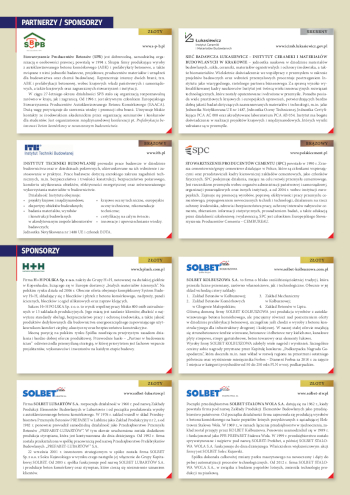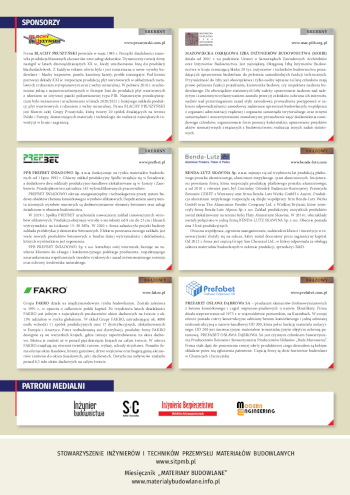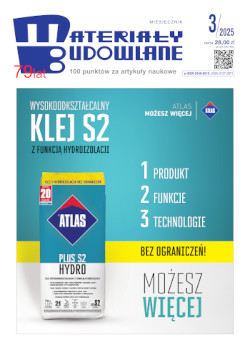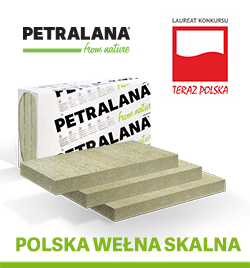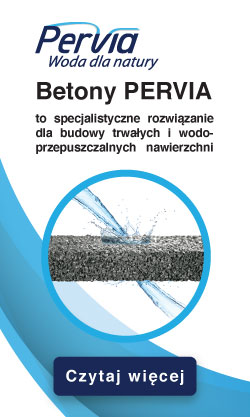Analiza mechanizmu deformacji materiału sypkiego w teście w aparacie bezpośredniego ścinania z wykorzystaniem Metody Elementów Dyskretnych
Open Access (Artykuł w pliku PDF)
citation/cytuj: Grabowski A. Analysis of the deformation mechanism of granular material in a direct shear test using the Discrete Element Method. Materiały Budowlane. 2025. Volume 632. Issue 04. Pages 15-23. DOI: 10.15199/33.2025.04.03
dr inż. Aleksander Grabowski, Politechnika Gdańska, Wydział Inżynierii Lądowej i Środowiska
ORCID: 0000‑0003‑0062‑0712
Correspondence address: Ten adres pocztowy jest chroniony przed spamowaniem. Aby go zobaczyć, konieczne jest włączenie w przeglądarce obsługi JavaScript.
DOI: 10.15199/33.2025.04.03
Original research paper / Oryginalny artykuł naukowy
Abstract: This study presents the results of DEM simulations of granular material shearing in a direct shear apparatus. The calibration procedure of the discrete model is described, together with a detailed analysis of the deformation mechanism at the grain scale. Parameters such as grain displacements, rotations, and contact forces are investigated. The results confirm that DEM effectively reproduces the behavior of non‑cohesive soils under various initial conditions and allows a detailed analysis of the internal mechanisms occurring within them.
Keywords: granular material; soil shearing; geotechnics; Discrete Element Method
Streszczenie: W artykule zawarto wyniki symulacji DEM, obejmujących ścinanie materiału sypkiego w aparacie bezpośredniego ścinania. Przedstawiono procedurę kalibracji modelu dyskretnego oraz szczegółową analizę mechanizmu deformacji na poziomie ziaren. Uwzględniono takie parametry, jak przemieszczenia i obroty ziaren oraz siły kontaktowe. Wyniki potwierdzają, że DEM skutecznie odwzorowuje zachowanie gruntów niespoistych w przypadku różnych warunków początkowych i pozwala na szczegółową analizę procesów zachodzących wewnątrz nich.
Słowa kluczowe: materiał sypki; ścinanie gruntu; geotechnika; Metoda Elementów Dyskretnych.
Literature
[1] Kozicki J, Niedostatkiewicz M, Tejchman J, Muhlhaus HB. “Discrete modelling results of a direct shear test for granular materials versus FE results”, Granul. Matter, t. 15, nr 5, s. 607–627, cze 2013, https://doi.org/10.1007/ s10035‑013‑0423‑y
[2] Vardoulakis I, Shah KR, Papanastasiou P. “Modelling of tool‑rock shear interfaces using gradient‑dependent flow theory of plasticity”, Int. J. Rock Mechanics Mining Sci. & Geomechanics Abstr., t. 29, nr 6, s. 573–582, lis 1992, https://doi.org/10.1016/0148‑9062( 92)91615‑c
[3] Cundall PA, Strack ODL. “A discrete numerical model for granular assemblies”, Géotechnique, t. 29, nr 1, s. 47–65, mar 1979, https://doi.org/10.1680/ geot.1979.29.1.47
[4] Salazar A, Sáez E, Pardo G. “Modeling the direct shear test of a coarse sand using the 3D Discrete Element Method with a rolling friction model”, Comput. Geotechnics, t. 67, s. 83–93, cze 2015, https://doi.org/10.1016/j. compgeo.2015.02.017
[5] Tejchman J, Bauer E. “Fe‑simulations of a direct and a true simple shear test within a polar hypoplasticity”, Comput. Geotechnics, t. 32, nr 1, s. 1–16, sty 2005, https://doi.org/10.1016/j.compgeo.2004.11.004
[6] Wang C, Deng A, Taheri A. “Three‑dimensional discrete element modeling of direct shear test for granular rubber–sand”, Comput. Geotechnics, t. 97, s. 204–216, maj 2018, https://doi.org/10.1016/j.compgeo.2018.01.014
[7] Roguska E. „Kotwy iniekcyjne w gruntach i skałach”. Materiały Budowlane 2024; 2: 61–65
[8] Kozicki J, Donzé FV. “A new open‑source software developed for numerical simulations using discrete modeling methods”, Comput. Methods Appl. Mechanics Eng., t. 197, nr 49‑50, s. 4429–4443, wrz 2008, https://doi. org/10.1016/j.cma.2008.05.023.
[9] Smilauer V i in., “Yade Documentation,” arXiv (Cornell University), sty 2023, doi: 10.48550/arxiv.2301.00611.
[10] Combe G, Roux J. “Discrete numerical simulation, quasistatic deformation and the origins of strain in granular materials”, In Taylor & Francis eBooks, wrz 2003, https://doi.org/10.1201/noe9058096043.ch136
[11] Belheine N, Plassiard JP, Donzé FV, Darve F, Seridi A. “Numerical simulation of drained triaxial test using 3D discrete element modeling”, Comput. Geotechnics, t. 36, nr 1‑2, s. 320–331, sty 2009, https://doi.org/10.1016/j. compgeo.2008.02.003
[12] Kozicki J, Tejchman J, Mühlhaus H‑B. “Discrete simulations of a triaxial compression test for sand by DEM”, Int. J. Numer. Analytical Methods Geomechanics, t. 38, nr 18, s. 1923–1952, kwi 2014, https://doi.org/10.1002/nag.2285
[13] Zhao S, Evans TM, Zhou X. “Shear‑induced anisotropy of granular materials with rolling resistance and particle shape effects”, Int. J. Solids Struct., t. 150, s. 268–281, paź 2018, https://doi.org/10.1016/j.ijsolstr.2018.06.024
[14] Grabowski A, Nitka M, Tejchman J. “3D DEM simulations of monotonic interface behaviour between cohesionless sand and rigid wall of different roughness”, Acta Geotech., paź 2020, https://doi.org/10.1007/s11440‑020‑01085‑6
[15] Jiang M, Shen Z, Wang J. “A novel three‑dimensional contact model for granulates incorporating rolling and twisting resistances”, Comput. Geotechnics, t. 65, s. 147–163, kwi 2015, https://doi.org/10.1016/j. compgeo.2014.12.011
[16] Morgan JK. “Numerical simulations of granular shear zones using the distinct element method: 2. Effects of particle size distribution and interparticle friction on mechanical behavior”, J. Geophysical Res.: Solid Earth, t. 104, B2, s. 2721–2732, lut 1999, https://doi.org/10.1029/1998jb900055
[17] Wang Z‑Y, Wang P, Yin Z‑Y, Wang R. “Micromechanical investigation of the particle size effect on the shear strength of uncrushable granular materials”, Acta Geotech., mar 2022, https://doi.org/10.1007/s11440‑022‑01501‑z
[18] Nitka M, Grabowski A. “Shear band evolution phenomena in direct shear test modelled with DEM”, Powder Technol., t. 391, s. 369–384, paź 2021, https://doi.org/10.1016/j.powtec.2021.06.025
[19] Oda M, Takemura T, Takahashi M. “Microstructure in shear band observed by microfocus X‑ray computed tomography”, Géotechnique, t. 54, nr 8, s. 539–542, paź 2004, https://doi.org/10.1680/geot.2004.54.8.539
[20] Hall SA i in., “Discrete and continuum analysis of localised deformation in sand using X‑ray μCT and volumetric digital image correlation”, Géotechnique, t. 60, nr 5, s. 315–322, maj 2010, https://doi.org/10.1680/geot.2010.60.5.315
[21] Nitka M, Tejchman J. “A three‑dimensional meso‑scale approach to concrete fracture based on combined DEM with X‑ray μCT images”, Cement Concrete Res., t. 107, s. 11–29, maj 2018, https://doi.org/10.1016/j.cemconres. 2018.02.006
[22] Nitka M, Combe G, Dascalu C, Desrues J. “Two‑scale modeling of granular materials: a DEM‑FEM approach”, Granul. Matter, t. 13, nr 3, s. 277– 281, mar 2011, https://doi.org/10.1007/s10035-011-0255-6
Received: 18.11.2024 / Artykuł wpłynął do redakcji: 18.11.2024 r.
Revised: 08.01.2025 / Otrzymano poprawiony po recenzjach: 08.01.2025 r.
Published: 25.04.2025 / Opublikowano: 25.04.2025 r.
Materiały Budowlane 04/2025, strona 15-23 (spis treści >>)


